
Peyote consumption: Everything you should know before considering use
This article explores the use of peyote in both traditional and modern contexts. Note that Zamnesia does not promote the use of peyote or other psychedelics. This content is for educational and harm-reduction purposes only.
Peyote (Lophophora williamsii) is a psychoactive mescaline-containing cactus. Though its use is popular today, peyote rituals date back over 5,000 years and are closely linked to the spiritual ceremonies of certain Native American tribes. In this article, we’ll explore how to take peyote in both a traditional and modern context.
But please note: we do not endorse taking peyote or mescaline, as there are significant risks involved. This article is intended for educational purposes only. Also, the information included is designed for readers with a basic understanding of peyote’s effects and mechanisms of action. If that doesn’t sound like you, check out our introductory article: "What Is Peyote?" That article also covers peyote’s complex legal status, which is important to keep in mind. Remember to always check your local regulations before sourcing, growing, or using peyote.
Now, let's take a closer look at how peyote is traditionally and commonly consumed.
Methods to use peyote
“How do you take peyote?” is a common question among both curious beginners and experienced psychonauts. While the most traditional method involves simply chewing dried or fresh cactus buttons, alternatives like peyote tea, juice, and capsules provide slightly different experiences.
Below, we’ll explore how peyote is used, focusing on four main consumption methods.
Chewing raw or dried peyote buttons
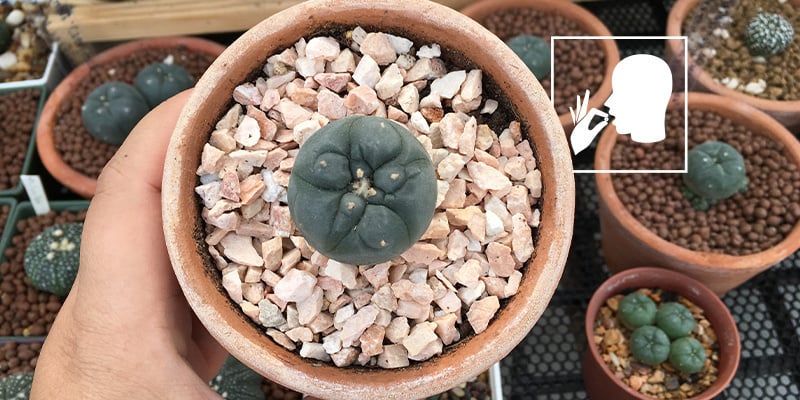
If you’re wondering how to use the peyote cactus in a traditional manner, chewing raw or dried peyote segments, or "buttons," is arguably one of the oldest peyote consumption methods. It was (and still is) the most common way of taking peyote at Native American peyote ceremonies.
Dried or raw peyote buttons are chewed slowly, allowing the mescaline within to seep from the plant and be absorbed via the mucous membranes in the mouth. Because of the cactus’s naturally strong and bitter flavor, chewing peyote buttons usually induces nausea and vomiting, which is often seen as cleansing and considered a natural part of peyote ceremonies.
However, chewing peyote can produce intense trips and uncomfortable physical side effects. It’s best reserved for ceremonies or rituals conducted by an experienced guide.
Drinking peyote tea (infusion method)
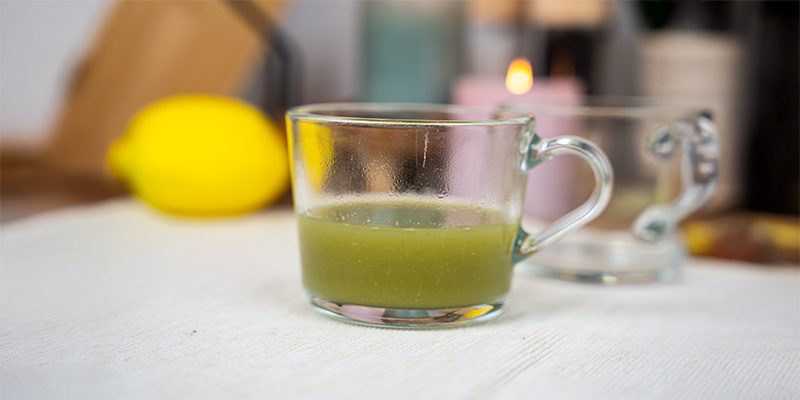
Brewing peyote into a tea-like beverage is also very popular, particularly outside of Indigenous ceremonies and rituals. But exactly what is peyote tea? It’s a simple brew made by boiling peyote buttons in water for several hours. Some users find this method easier to stomach than chewing the fresh or dry cactus.
Here’s a simple step-by-step guide to making peyote tea:
- Dry your peyote buttons until they have a leathery or brittle texture. You can do this by simply leaving them to sit in warm, dry conditions, by drying them in a food dehydrator, or by heating them at very low temperatures in an oven.
- Chop your dried peyote into small pieces. This increases surface area and helps extract more mescaline.
- Simmer your chopped peyote pieces in a stainless steel pot on low heat for 2–3 hours. Stir regularly to prevent the mixture from boiling. Use 34 fl oz of water per 0.90–1 oz of dried plant material.
- Strain the mixture into a clean glass container using a fine mesh strainer or muslin cloth. Squeeze the solid peyote pieces to extract as much mescaline from them as possible.
- Cook the peyote pieces in water up to two more times and combine the liquids to maximize your yields.
- Allow the peyote tea to cool and sip it slowly over 30–60 minutes. Please note that the mixture will retain the peyote cactus’ characteristic bitterness and may induce nausea or vomiting.
Unfortunately, properly dosing peyote is difficult due to the varying potency of individual cacti. Generally speaking, dried peyote can contain between 3–6% mescaline by weight. When cooking 0.90–1 oz in 34 fl oz of water, 3 fl oz of tea can contain up to 180 mg of mescaline (enough for a mild dose). Check the dosing guidelines below for more information.
Blended peyote juice
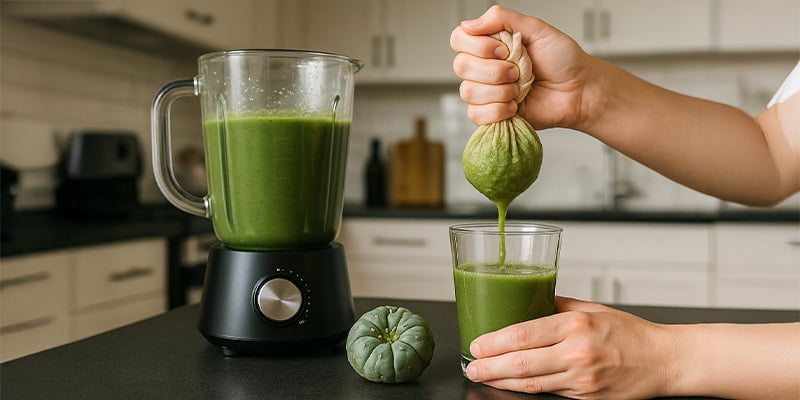
Another popular way to take peyote involves blending cactus buttons in water to create a fresh juice/slurry. Some users prefer this method because it doesn’t use heat and may therefore retain more of the cactus’ active compounds. However, blended peyote juice is harder to digest and often more nauseating than peyote tea.
The method for making peyote juice is simple: blend 0.90–1 oz of dried buttons (or 4–5 oz of fresh cactus) in 34 fl oz of water, then strain the mixture through muslin or cheesecloth to remove the plant matter. Sip roughly 3 fl oz of juice for 30–60 minutes, but be careful: peyote juice has a faster onset and is more potent than peyote tea.
While taking peyote juice is common among some tribes as well as in home preparations, it’s very potent and should be approached with caution.
Encapsulated dried peyote (powder form)
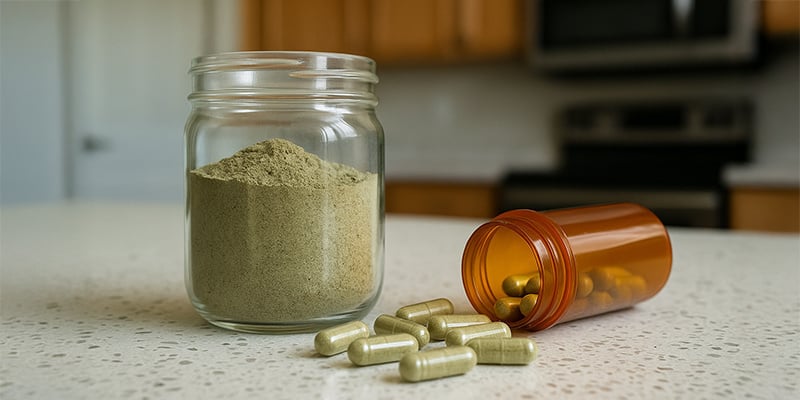
A more modern way of administering peyote involves preparing and ingesting capsules containing dried peyote powder. This method is gaining popularity because it allows a more gradual release of mescaline through the gastrointestinal tract. However, it also has a delayed onset, which is important to keep in mind.
To make peyote capsules, you’ll need to dry your peyote buttons, grind them into a fine powder, and fill the powder into gel capsules. This method is well-suited to microdosing peyote; for stronger effects, you may find yourself taking dozens of capsules, which can produce stomach discomfort, nausea, and vomiting.
While taking peyote in capsule form may seem more controlled or clinical, it carries all the same legal and psychological risks as chewing, brewing, or juicing peyote. Also note that taking peyote in the form of capsules is detached from the plant’s traditional use. However, it does appeal to individuals looking to explore different ways of taking this ancient cactus, especially microdosing.
Dosing peyote and how to estimate potency
Dosing peyote is challenging for numerous reasons. First of all, unlike with other psychedelics, there is no officially recognized safe peyote dose. Hence, taking peyote in any of the forms mentioned above carries some risks.
Moreover, peyote is a natural product, and the mescaline content of cacti specimens can vary considerably. As if that weren’t enough, other variables also affect peyote dosing, such as:
- Body weight
- Age
- Health status
- Mental health background
- Preparation method
- Your metabolism and tolerance
General peyote doses observed in traditional use
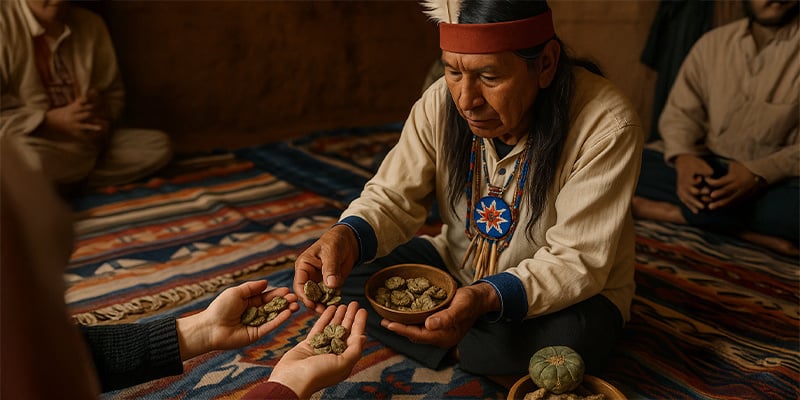
In traditional ceremonial contexts, shamans usually administer larger amounts of peyote than what psychonauts might take on their own in a more recreational setting. For example, in some Native American rituals, participants may take anywhere between 1–5 oz of dried peyote (equivalent to 4–12 buttons). Peyote tea is less common in ceremonies, though some guides may use it.
Remember that peyote ceremonies typically respect the ancient role of the plant in Native American spiritual practice. Participants are guided through the experience by a shaman or roadman who helps manage the set, setting, and dosage (in some rituals, you may take multiple doses of peyote throughout the night).
Estimating the potency of peyote by weight
Estimating the amount of mescaline in peyote based on the cactus’s weight is a guessing game. Generally speaking, one fresh peyote button may contain 200–300 mg of mescaline. Dried buttons, on the other hand, may contain a mescaline concentration of 3–6%.
On average, mescaline doses can be divided into three categories:
- Threshold doses (i.e., doses that produce a notable but mild trip): Usually 100–150 mg of mescaline, or roughly 3–4 dried buttons.
- Moderate doses: 200–300 mg, equivalent to 6–12 dried buttons.
- Strong doses: 400+ mg of mescaline. This is generally not recommended, even for experienced psychonauts.
Remember that the ranges above are only estimates. The mescaline concentration of peyote buttons (even of the same size) can differ dramatically due to the natural variation in alkaloid concentration within the plant.
If you decide to try peyote, always start with a small dose and gauge your body’s reaction. Wait at least one hour before upping your dose, and only do so if needed. Never take mescaline multiple days in a row, as the body rapidly develops a tolerance to it. Wait at least one week between mescaline trips.
Special precautions and warnings

Though peyote is commonly taken for ceremonial and spiritual purposes, it is generally considered unsafe due to the lack of dosing standards and the side effects it produces. These include:
- Nausea and vomiting
- Increased heart rate, blood pressure, and respiratory rate
- Anxiety, paranoia, emotional instability, panic, and fear
- Hallucinations that can lead to psychotic, suicidal, or violent behavior
- Headaches and dizziness
- Drooling
- Blurred vision and drowsiness
Deaths directly attributed to mescaline and peyote are rare. However, mescaline can trigger dangerous psychological episodes, especially in people with mental health issues. If you have a history of psychosis, severe anxiety, or bipolar disorder, steer clear of peyote and other psychedelics: there’s decent research to suggest that they can trigger or intensify the symptoms associated with these conditions.
Also, remember that set and setting may have a huge impact on your peyote experience. Pay attention to your set (i.e., mindset) in the days leading up to a planned peyote trip, and do not trip if you’re feeling distressed, overly anxious, or otherwise unwell.
Consider your setting, too. While the “right environment” for taking peyote may differ depending on a person’s preference, it is generally recommended (like with all psychedelics) to consume peyote in quiet, calm, and relaxing settings (not overly stimulating situations). Remember, peyote is by no means a “party drug”.
Do not take peyote if you:
- Are pregnant or breastfeeding
- Have a history of mental health issues
- Have heart problems
- Are going into or recovering from surgery
- Are taking medications, such as antidepressants (SSRIs and MAOIs), blood pressure pills, sedatives, or stimulants
From ritual to reality: Peyote in the modern world
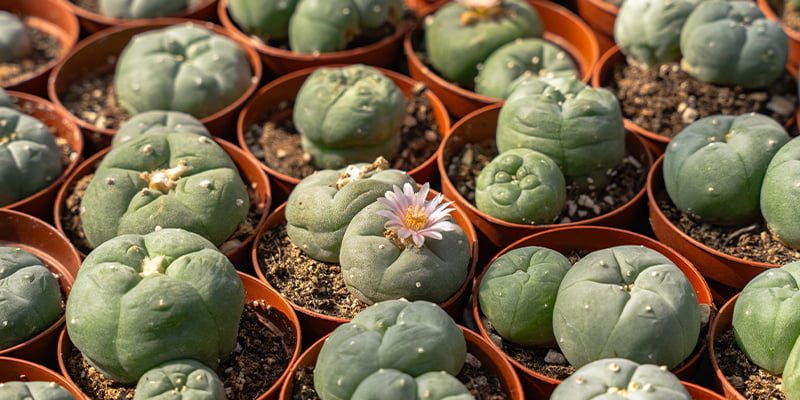
Peyote formed a cornerstone of ancient American spiritual practice, so much so that it’s still a part of modern Native American ceremonies and rituals. Of course, psychonauts are also intrigued by peyote’s psychedelic effects, spiritual potential, and ancient history.
Unfortunately, the intense nature of peyote’s effects, the risks associated with its use, and the significant legal restrictions surrounding the plant make it hard to sign off as safe. Hence, we do not recommend taking peyote for spiritual or recreational purposes, not even to experienced psychedelic users. However, growing peyote can be a great risk-free (and generally legal!) way to connect with this ancient plant.
At Zamnesia, we offer detailed instructions for growing peyote.
-
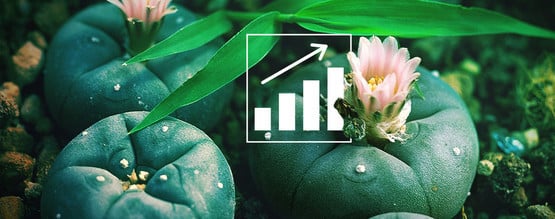 8 min
September 9, 2025
How to grow & care for peyote: A complete step-by-step guide
For thousands of years, peyote (Lophophora williamsii) has occupied a central role in the spiritual practices of our ancestors. While we do not recommend taking peyote in the same way that Native...
8 min
September 9, 2025
How to grow & care for peyote: A complete step-by-step guide
For thousands of years, peyote (Lophophora williamsii) has occupied a central role in the spiritual practices of our ancestors. While we do not recommend taking peyote in the same way that Native...
-
 5 min
July 29, 2025
What is peyote and why do people use it?
Curious about peyote? Learn about the history, origins, and use of the mescaline cactus below. From ancient American tribes to modern-day rituals, peyote continues to play an important role in...
5 min
July 29, 2025
What is peyote and why do people use it?
Curious about peyote? Learn about the history, origins, and use of the mescaline cactus below. From ancient American tribes to modern-day rituals, peyote continues to play an important role in...
-
 6 min
May 2, 2025
How to prepare for a safe psychedelic trip
Psychedelic experiences benefit from knowledgeable and careful planning. It doesn't need to be over-the-top, but a little prep can make a trip absolutely wonderful. Find out how to prepare for a...
6 min
May 2, 2025
How to prepare for a safe psychedelic trip
Psychedelic experiences benefit from knowledgeable and careful planning. It doesn't need to be over-the-top, but a little prep can make a trip absolutely wonderful. Find out how to prepare for a...
-
 2 min
November 15, 2014
The Long-Term Effects of Peyote Use on the Brain
Peyote has been used for entheogenic practices for thousands of years - but what effect does such use have on the brain?
2 min
November 15, 2014
The Long-Term Effects of Peyote Use on the Brain
Peyote has been used for entheogenic practices for thousands of years - but what effect does such use have on the brain?





 United States
United States










